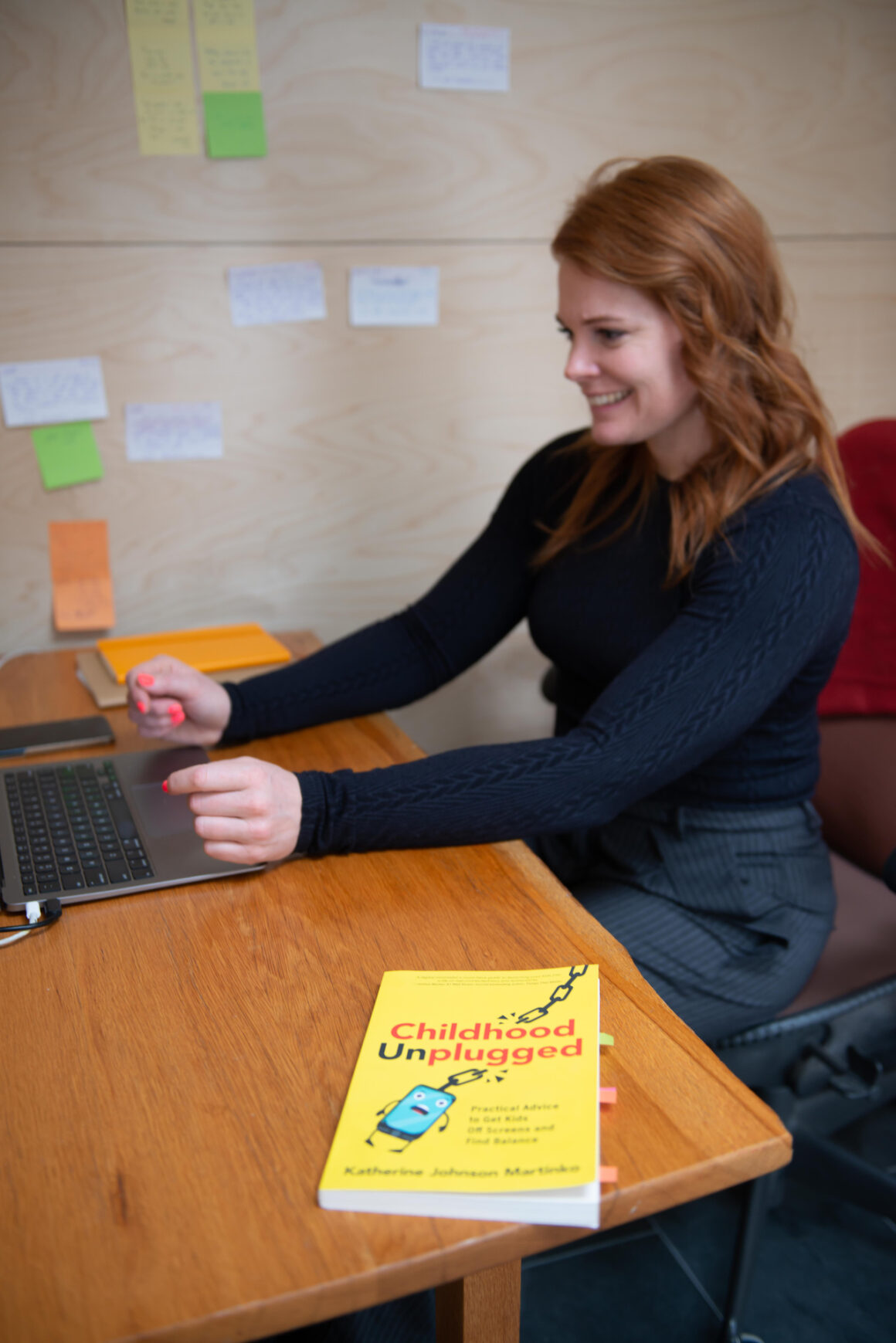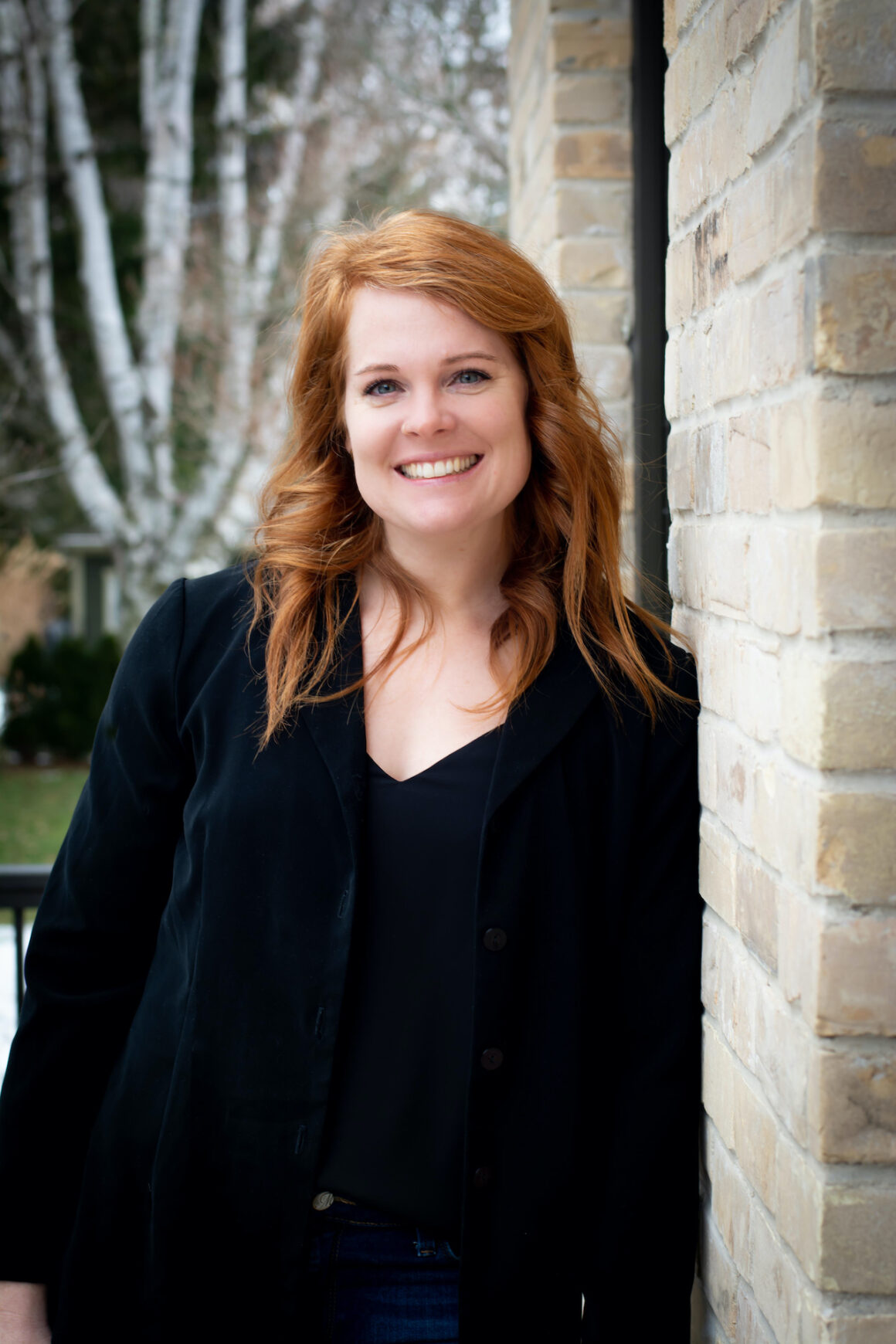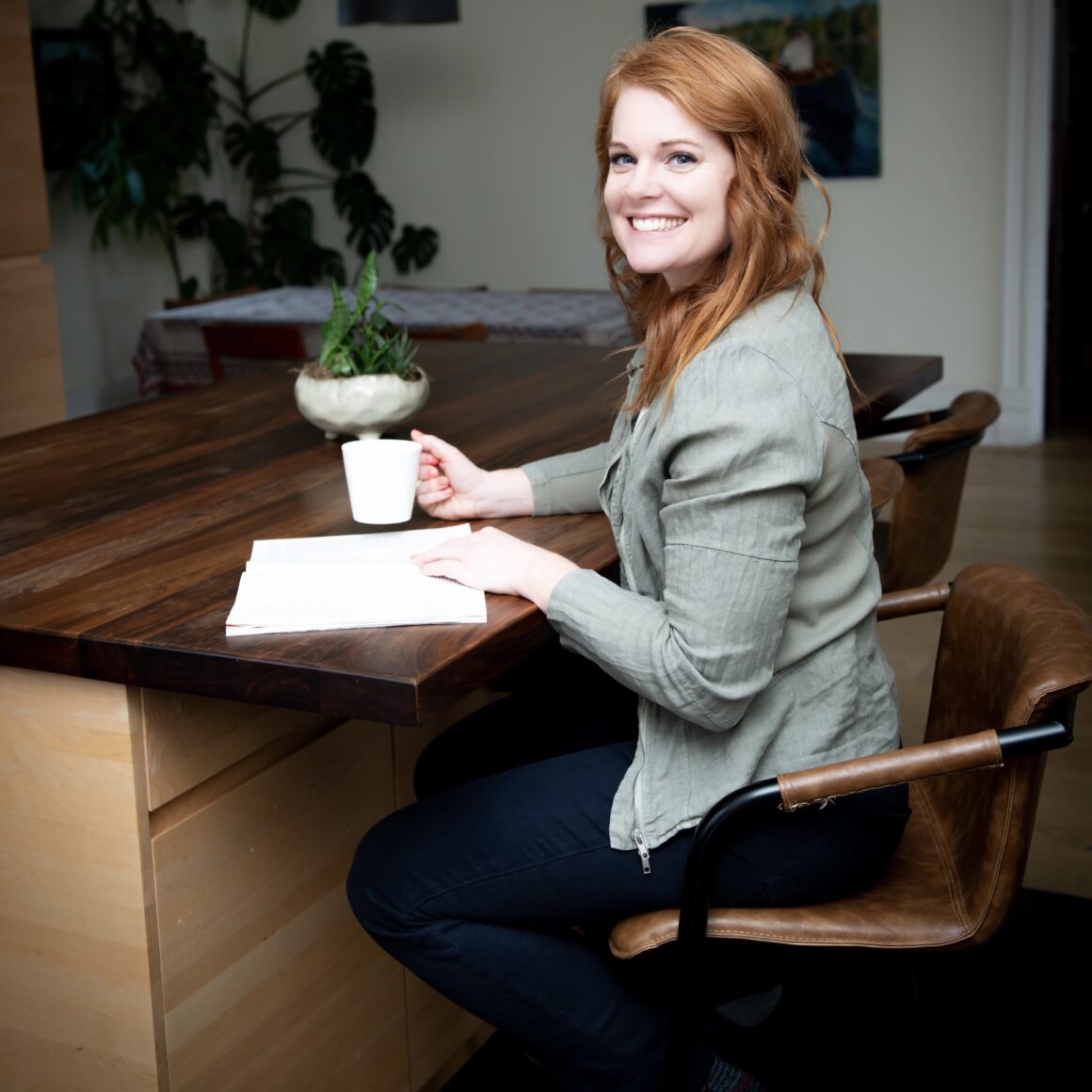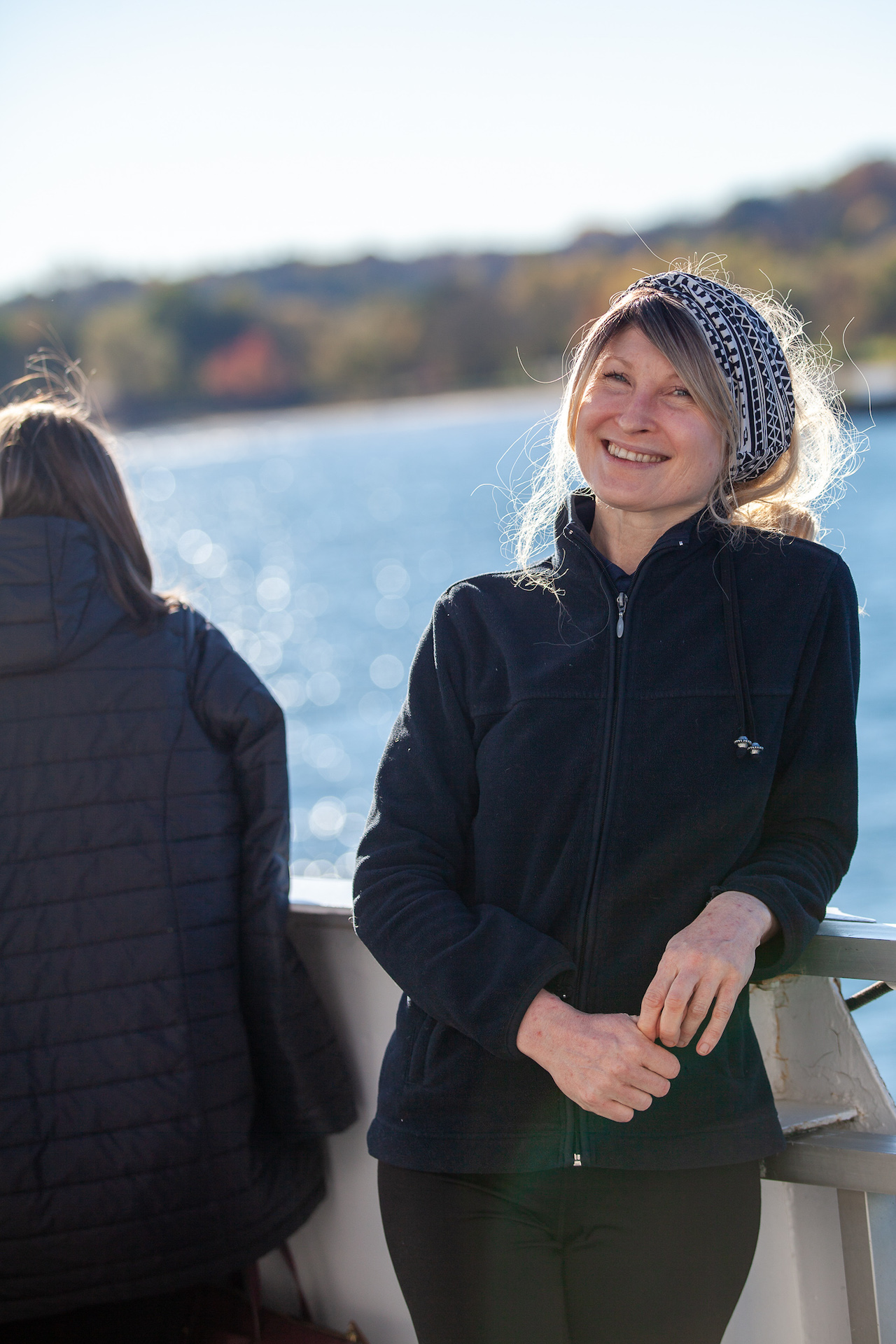Childhood Unplugged. No, it’s not the neighbourhood kids’ new acoustic album. It’s the notion or rather strong suggestion to dial back children’s screen time that Katherine Johnson Martinko puts forth in her recent book of the same name.
The Port Elgin author, editor, public speaker, classically trained violinist, wife, and mother (to list merely a few of her titles) details a comprehensive way to achieve this goal. Childhood Unplugged: Practical Advice to Get Kids Off Screens and Find Balance tackles the increasingly relevant and often difficult task of beginning to wean our children away from the omnipresent technology of screens whether it be from TV’s, tablets, cell phones, laptops, you name it. Screens are everywhere these days and it’s about time people start considering the very evident and clear effects they are manifesting in ours and our children’s lives.

Growing up in the Muskoka area to parents that chose to live without a television and in the pre-internet, cell phone, and laptop era, Katherine exclaims that it wasn’t all that difficult to maintain that lifestyle once she ventured out on her own. Her book doesn’t preach an inherent evil emanating from all of our devices (though it wouldn’t be too difficult to take that leap if you were so inclined). She acknowledges certain conveniences, usefulness, and practicalities of such devices but stresses limiting their use in one’s life. Hence why she describes her family as “digital minimalists” instead of screen-free. Her and her husband do own cell phones and they do have internet at home but her children do not own personal devices and instead treat the use of a computer to watch the occasional movie on Netflix as just that, a treat.
Katherine’s book and weekly articles on her Substack account The Analog Family take aim at “minimizing the role of devices in the life of the family,” she says. Having minimal exposure to screens at home doesn’t necessarily mean one is safe elsewhere, however. It has come to a point now that many schools are providing laptops in class to each student without the slightest regard that perhaps it is not entirely welcomed by all students and their families.
It isn’t the stats in moderate/minimal usage adults that are worrisome. In fact, it’s the downright staggering, blatantly evident, seemingly ignored heaps of scientific data and research regarding young children and teens that will make you wonder why nobody appears to be doing anything about this (yet). It certainly was an eye opener for me. With the average child spending anywhere from 5.5-9 hours per day in front of a screen, this should be opening a lot of people’s eyes. (There are simply too many alarming correlations, stats, and figures to list in this article so instead of trying to filter out some of the most damning ones, I’ll encourage you to pick up the book and read them for yourself).
“Equally important to the neurological, emotional, physical, and social impacts is the opportunity cost. What is NOT happening because you’re spending all that time on screen? What can a kid gain when you put the devices away?” Martinko wonders.

In the face of all that we now know about developing brains and how they’re affected, and therefore shaped, by prolonged and early exposure to screens, it is surprising that these warnings are just now gaining traction. You can hardly turn on a TV screen (admittedly bad analogy) without hearing about somebody somewhere starting to take action. Whether it be the state of Florida banning social media accounts for anyone under the age of 14 or the growing number of Ontario school boards joining to sue massive tech corporations, people are beginning to take notice and Martinko is leading the charge armed with years of education (honors graduate from the University of Toronto) and experience in the field. More experience in the field is just what kids need these days actually. They need physical play and interaction with other children to strengthen the tools they will need as adults. Through play, kids learn dozens of real world skills that simply get neglected otherwise. When they aren’t constantly looking at their phones and incessantly scrolling through social media and its ruthless advertising, their world opens up immensely. Martinko’s book puts an “emphasis on strengthening human skills – Can your kid make eye contact? Can they have a simple conversation? Can they sit down and read a book and focus on an idea and expand on that idea and express it? Can they occupy themselves?“ Tough questions that need to be asked, and she’s asking them.
With so many practical suggestions and insights most wouldn’t notice on their own, its rather challenging trying to pick only a couple takeaways after reading. I will try anyway. One of my favourite parts comes in Chapter 4 when Katherine offers 30 ideas for kids to “Banish Boredom” as the sub-title forecasts. Before I could even get 1/2 finished reading the list, I was already giddy to try some of them with my son. As parents, it’s our job to keep our children safe and often we struggle with how much autonomy to give them with the fear of being too overprotective lurking over our shoulder. Perhaps that “fear is misplaced, and then we don’t fear the internet. Our children are suffering online and yet we are more worried about what’s going on out here. We overprotect them in the real world and underprotect them online,” she says.
It’s entirely possible that, if this problem isn’t addressed, future generations of children will not only miss out on the simplest of joys that the natural world provide us in abundance and are theirs by right, but these same kids will also likely suffer from a plethora of mental ailments and burdens that just have not been seen on such a scale before this technology arose. Excessive exposure to screens as young children lead to impairments such as “being less good at encoding memories, less good at facial recognition cues, less empathetic, and having language become affected,” as Martinko warns. These impairments don’t just sort themselves out as the child gets older either. “Since about 2010 the rise in teen anxiety, stress, and suicide has been largely attributed to social media use,” she says.

Martinko’s nonjudgmental advice is certainly not aimed at trying to shame parents but rather to alert and bring awareness to the issue. There’s no denying that it is easy and convenient to throw on an episode of something to occupy a child as a parent labours to catch up on housework, sleep, or any other particular task that has been neglected that week. Parenting is a high wire juggling act at the easiest of times and single parenting can be even more difficult. However, “all screen times are not equal”. Certain shows or episodes on say YouTube or Netflix have short running times and will often lead directly into the next episode. The child won’t know when an appropriate time to stop is. “At least with a movie or even a hard copy VHS or DVD, there is a natural beginning and end.”
The future isn’t lost though. Katherine does remain fundamentally hopeful. Our society “doesn’t need to be this way. It’s such an optional thing. As a parent, you have the right to revisit the rules surrounding screen time in your home,” she says. We don’t need to wait for legislative changes or school board policies to be enacted. Parents can begin doing some of these things today. And while such actions as a ban on smartphones in the classroom would certainly help, starting early and at home with more stringent practices surrounding screens and social media is ultimately going to reap the best rewards. Though in Katherine’s own words, “it’s never too late!”

To promote her message, Katherine hosts presentations for schools, community groups and service clubs that come with a Q&A at the end. If you think of a school or group that that might be interested, don’t hesitate to contact her. Also, don’t hesitate to read her book available here, and subscribe to her Substack newsletter The Analog Family. And if you’d like to see her following one of her other passions, get a ticket for the Georgian Bay Symphony and see her playing alongside her 14 year old son.
Written by Skye Wilkinson
Photos provided by Katherine Johnson Martinko













